Challenging torrential rains countered by cooperative bats in Costa Rica
Merlin and MTBC team members spent 19 days in Costa Rica last November on a filming trip for “Bat City” with its Director and Emmy
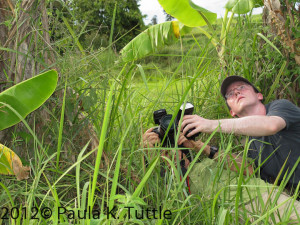
After a rather tense drive from Hala Bala Wildlife Sanctuary through the risky provinces of Thailand’s Deep South on our way to the Narathiwat Airport, we said goodbye and thanks to Daniel Hargreaves for planning and organizing what had been a fantastic field trip. Daniel needed to return home to the UK, but Merlin and I would stay in Thailand for another week to photograph nectar-feeding bats visiting Parkia flowers, among others. The fruit of Parkia is called petai or stink bean. It’s bat pollinated and exceptionally economically important in Southeast Asia.
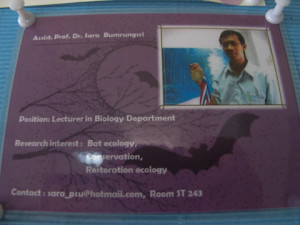
To help us get these photographs, we would be working with Merlin’s colleague, Dr. Sara Bumrungsri, and his graduate students at Prince of Songkla University, a two-hour drive north of the Narathiwat Airport in the city of Hat Yai.
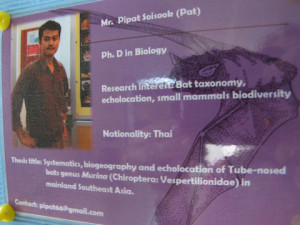
While working at Hala Bala Wildlife Sanctuary, we were in the capable hands of one of the Ph.D. candidates at PSU, Pipat Soisook, curator of mammals at the natural history museum on the PSU campus. Pipat had delivered Daniel safely to the Narathiwat Airport and then Merlin and me to our hotel in Hat Yai. Only five months earlier, an insurgent’s bomb had exploded in the adjoining shopping mall, killing and injuring civilians.
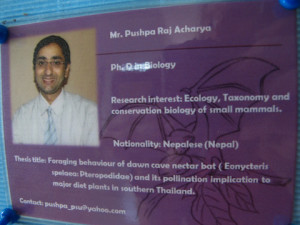
At our hotel, we were met by Dr. Sara and Pushpa Raj Acharya, a Ph.D. candidate from Nepal. Pushpa is his country’s first bat biologist. As a matter of fact, before Merlin had left his position as Executive Director of Bat Conservation International, he had organized a special BCI scholarship for Pushpa to study durian pollination by bats. Durian is another extremely economically important fruit in SE Asia.
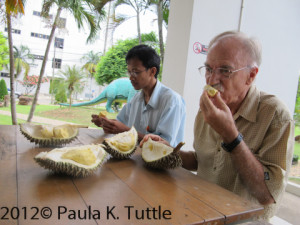
It seems to me, durian should be called stink fruit. It’s so malodorous that hotels and airplanes ban it. Yet despite its unpleasant smell, durian has a lot of loyal fans. Dr. Sara is one of them. He enthusiastically bought one to share with us. Merlin is the ultimate frugivore and never met a fruit he didn’t like. Durian was a big hit with him, but I’d rather eat stink beans.
Love our content? Support us by sharing it!
Merlin and MTBC team members spent 19 days in Costa Rica last November on a filming trip for “Bat City” with its Director and Emmy
Bats can use sounds in many complex ways. They can sing and even have different dialects… When imagining a bat, the first thoughts that come
Thanks to all the Join the Nightlife: Bats and Agriculture attendees who joined us out in the field this year! Guests got hands-on experience with
Supporter and friend of MTBC, Australian conservation and animal welfare photojournalist Doug Gimesy, had his images recognized in two categories at the recent Siena International
2024 © Merlin Tuttle’s Bat Conservation. All rights reserved.
Madelline Mathis has a degree in environmental studies from Rollins College and a passion for wildlife conservation. She is an outstanding nature photographer who has worked extensively with Merlin and other MTBC staff studying and photographing bats in Mozambique, Cuba, Costa Rica, and Texas. Following college graduation, she was employed as an environmental specialist for the Florida Department of Environmental Protection. She subsequently founded the Florida chapter of the International DarkSky Association and currently serves on the board of DarkSky Texas. She also serves on the board of Houston Wilderness and was appointed to the Austin Water Resource Community Planning Task Force.
Michael Lazari Karapetian has over twenty years of investment management experience. He has a degree in business management, is a certified NBA agent, and gained early experience as a money manager for the Bank of America where he established model portfolios for high-net-worth clients. In 2003 he founded Lazari Capital Management, Inc. and Lazari Asset Management, Inc. He is President and CIO of both and manages over a half a billion in assets. In his personal time he champions philanthropic causes. He serves on the board of Moravian College and has a strong affinity for wildlife, both funding and volunteering on behalf of endangered species.